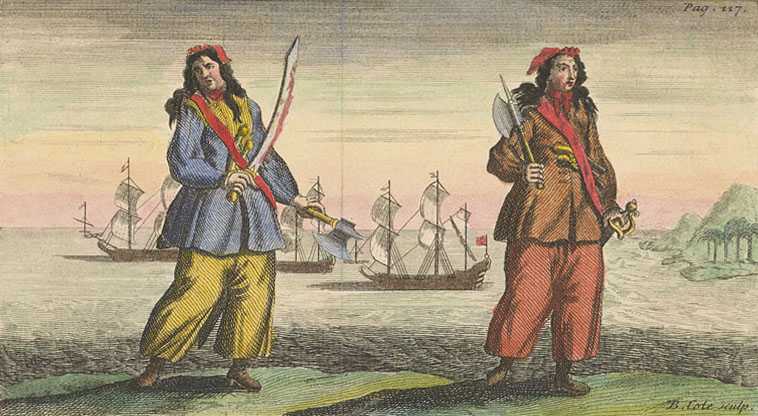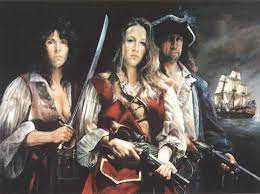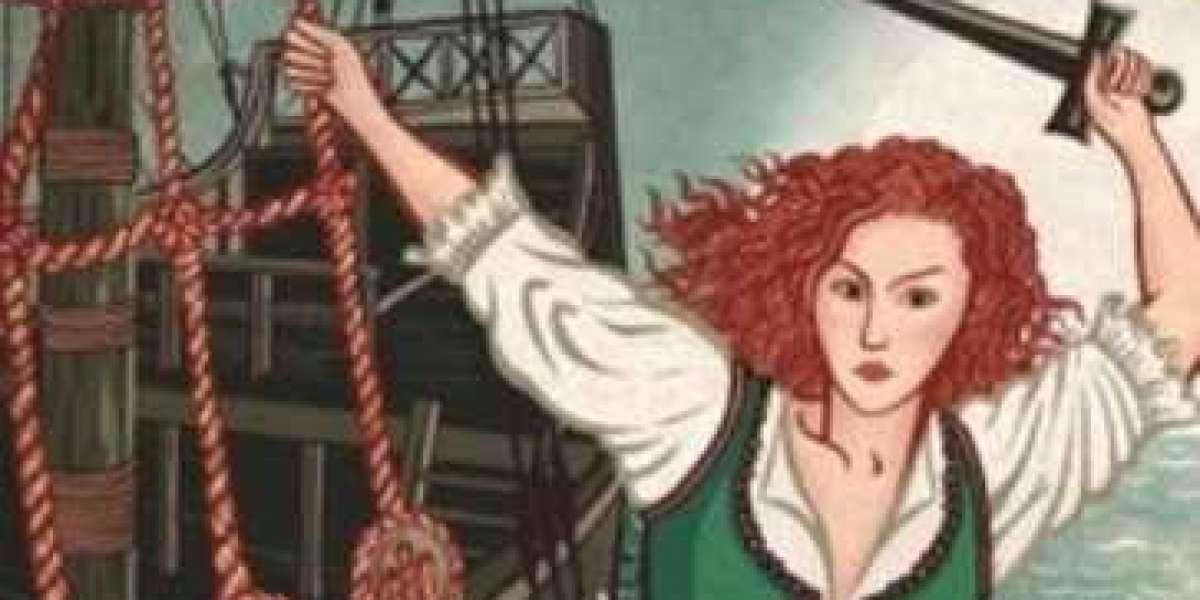Pirates considered themselves as super-men, free Brethren of the Coast, not according to the Welsh ship’s surgeon Lionel Wafer though, who made several voyages with buccaneers and described them in his logbook as rather common men, indeed at times cowardly or overly fearful, encouraged only by an adequate dose of alcohol in their body. To further weaken the myth of the super-man pirate, were certainly the most famous, although not the first in the history, lady-pirates: Anne Bonny and Mary Read.
Both born in the late 17th century and raised by families as sons to hide their identities for legal, financial or social reasons, they grew up strong, learning how to fight and behave as a gentleman in a wealthy environment and consequently truly smart. We can rely on documented chronicles about Bonny and Read thanks to Daniel Defoe (most famous for the novel about Robinson Crusoe) who probably under the pen name of Captain Charles Johnson wrote stories of piracy, few of which focused on the intertwined life of the two women and the trials against them.

Mary Read continued to pretend to be a boy as an adult once she and her mother were left in poverty by the family. She ended up enrolling in the British Navy out of necessity, finally becoming a brave soldier in the navy and thus living a free and independent life, until she fell in love with a Dutch fellow soldier with whom she opened an inn in Amsterdam, delighting customers with sea tales from a female point of view. It did not last long as her husband died quite early and Mary resumed male dress and once again boarded a ship bounded to West.
Meanwhile, Anne Bonny grew up in Charleston, South Carolina, at that time a famous pirate hideout, as the illegitimate daughter of an Irish run-away lawyer who was able to recreate a comfortable and wealthy situation for the family in the new world. Anne was reported as too violent and dangerous (she hurt more than one suitor and was accused of homicide) probably because too stubborn, proud and independent for a chauvinist and male-dominated world. However, the young rebel chose to marry James Bonny, against the will of her family, as he was a fraud English official, thus she could move to Nassau (Bahamas) a pirate sanctuary where she met and fell in love with the famous pirate John Rackham. Finally, disguised as a man, Anne was living her dream: be onboard, sailing and venturing by sea.
The two ladies crossed their fate when Rackham’s pirate ship attacked the merchant ship where Mary Read was travelling and it is reported that Mary willingly joined the pirates. Anne and Mary immediately smelled each other despite their disguises, so much they had in common: both women, smart, determined, fearless and, for what is reported, bloodier than their male mates. That uncommon female alliance and power led the two ladies-pirates to stop hiding their true identity and be accepted and respected by the Rackham’s crew. Their reputation and successful raids grew to the point that the British Navy put a bounty on their heads.

They were captured alongside Rackham crew but Anne and Mary were the last to surrender, brave as two Amazons, fighting against an English military vessel in the Caribbean Sea, in 1720. All three were sentenced to death, but Bonny and Read had their executions stayed because both of them claimed to be pregnant with Rackham and therefore they were added with a conviction for prostitution. Mary actually gave birth to a child but died in prison as a result of an infection while Anne’s death is undocumented and still fosters many legends.







